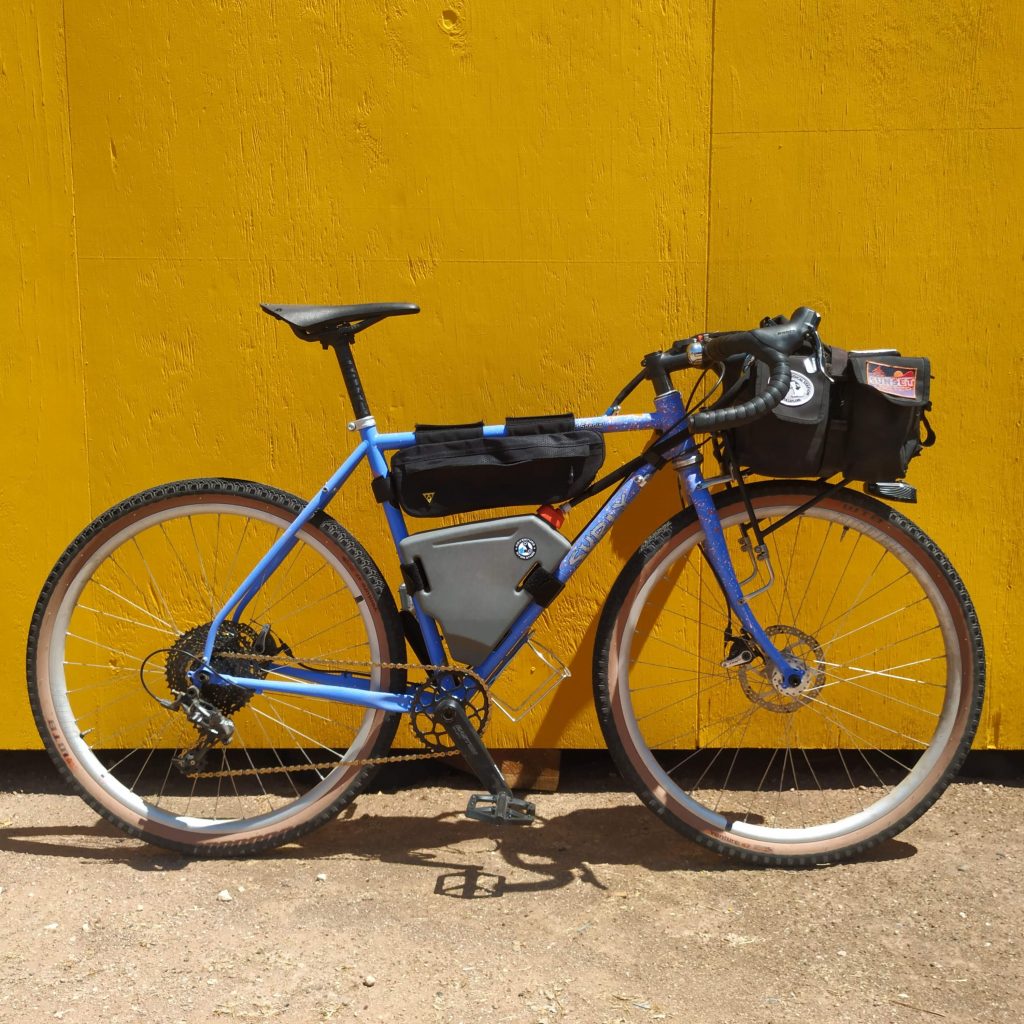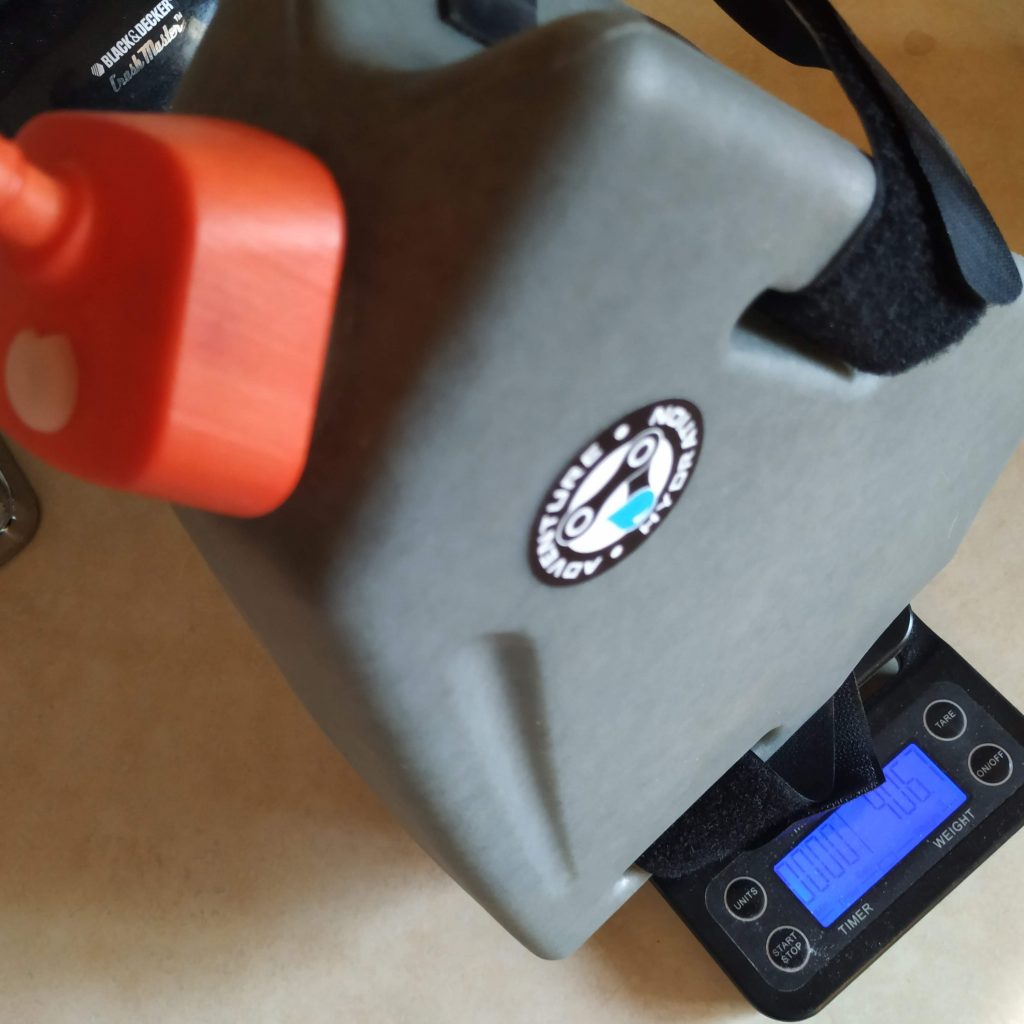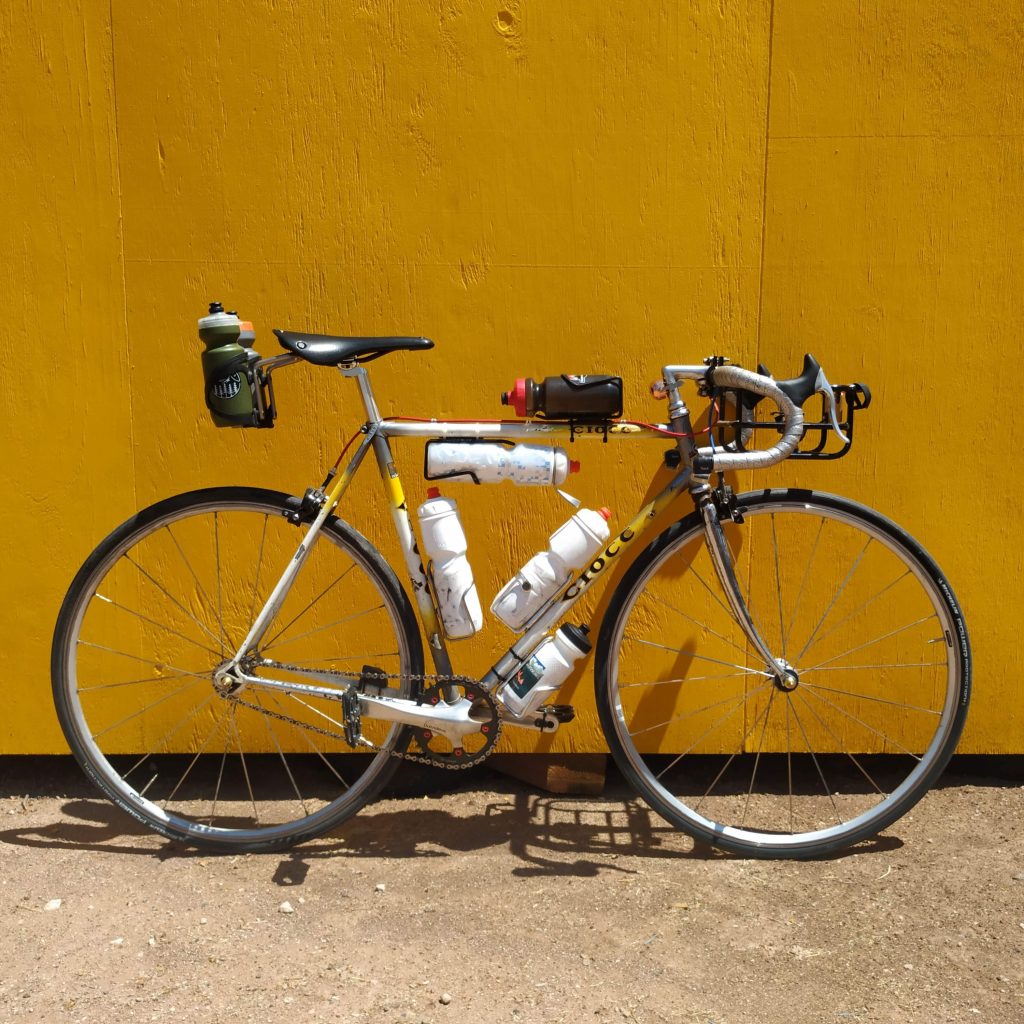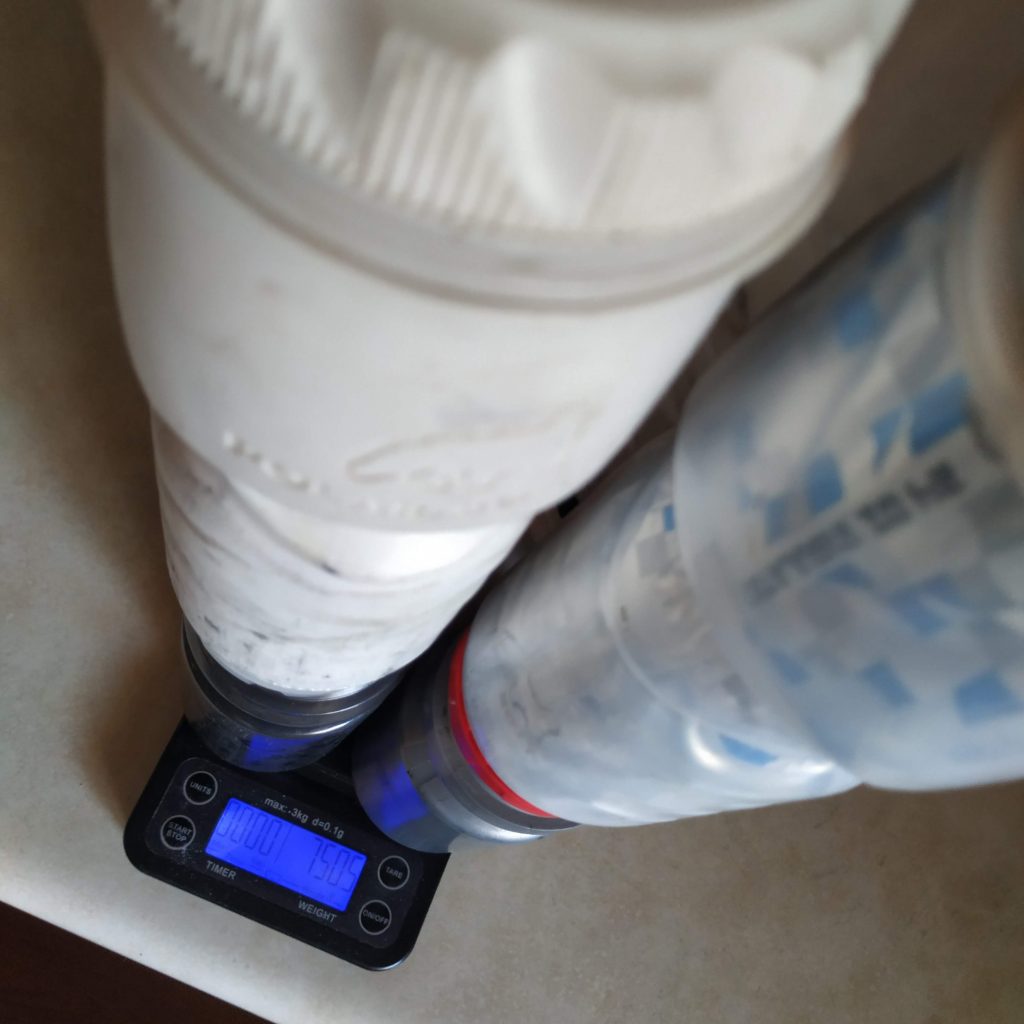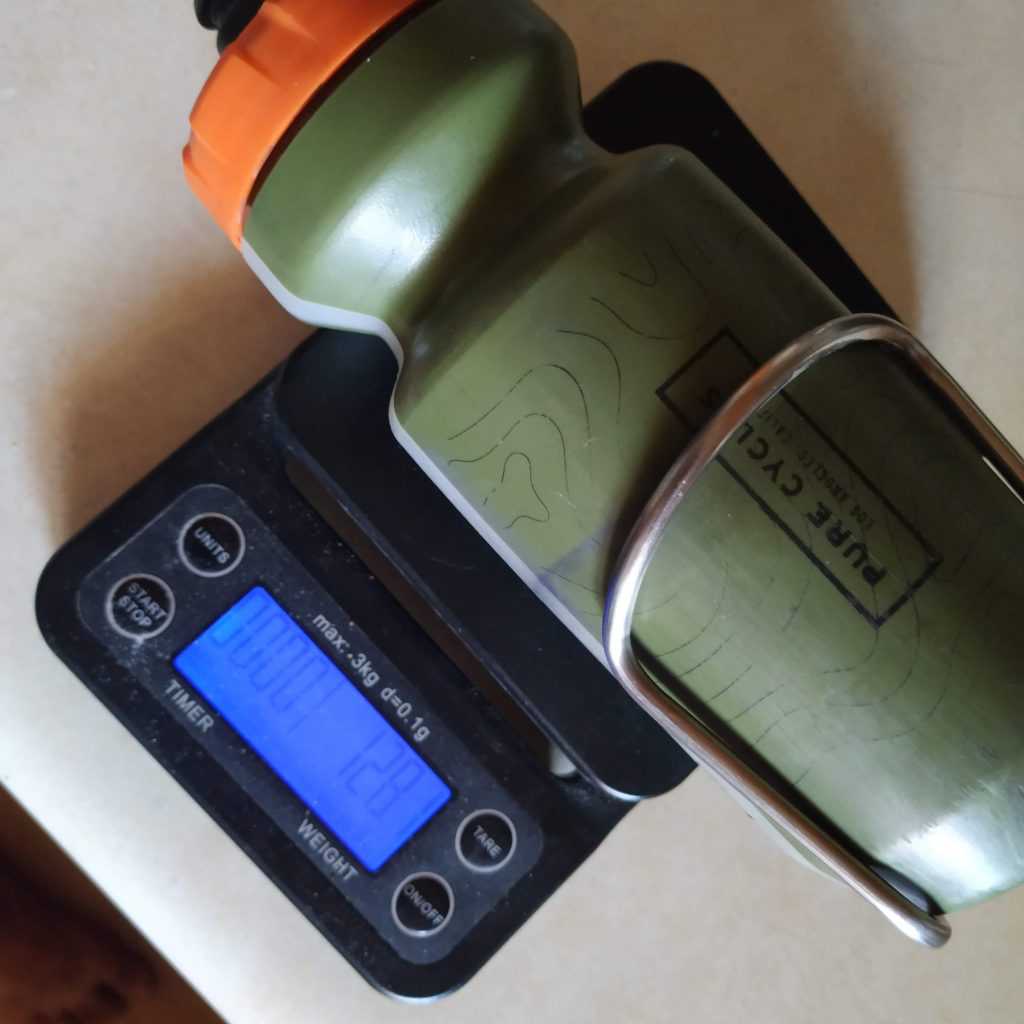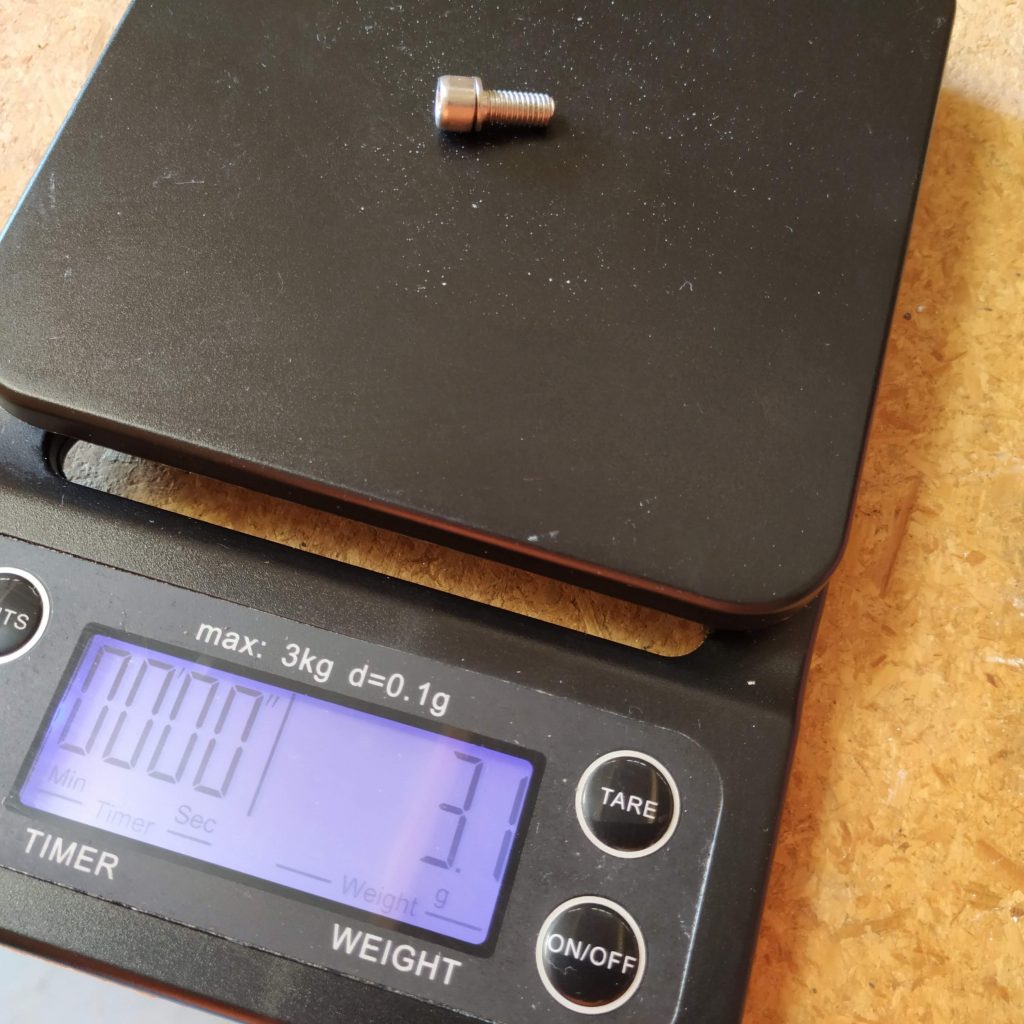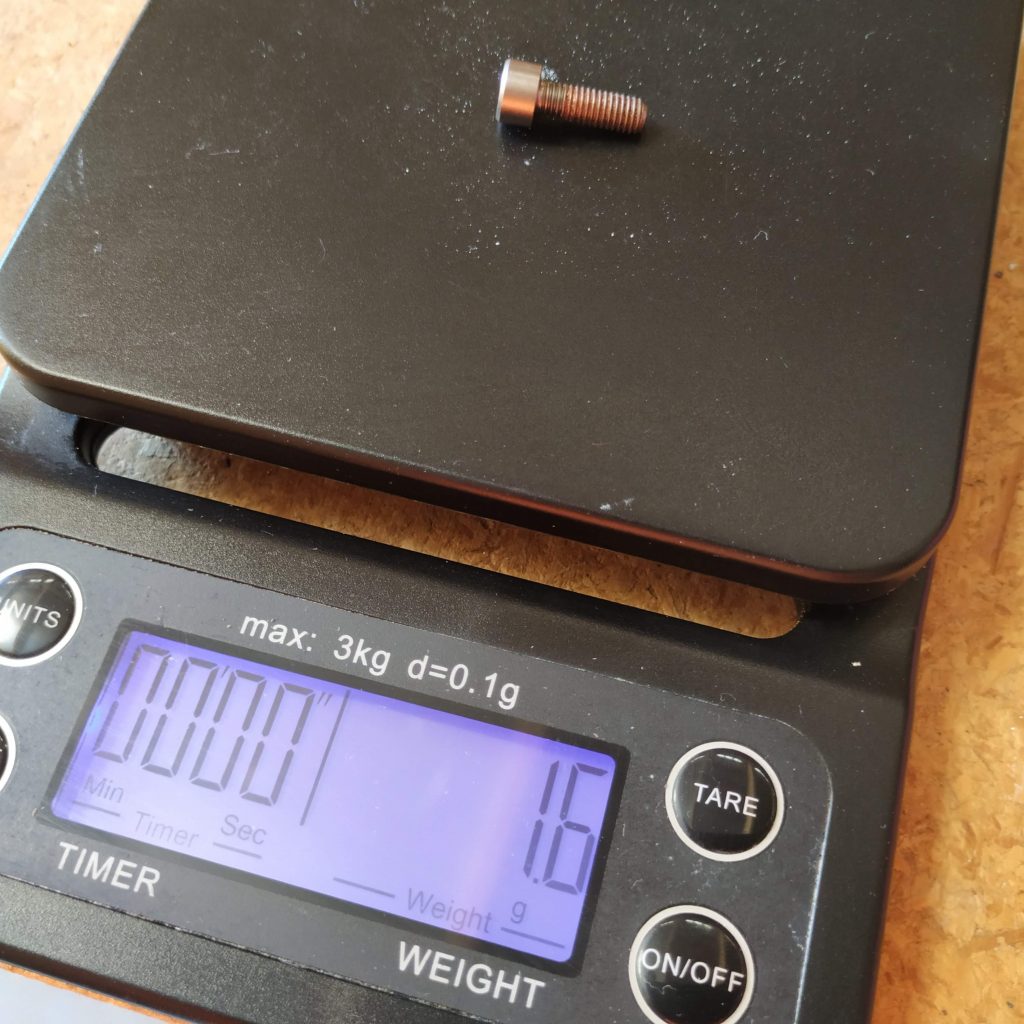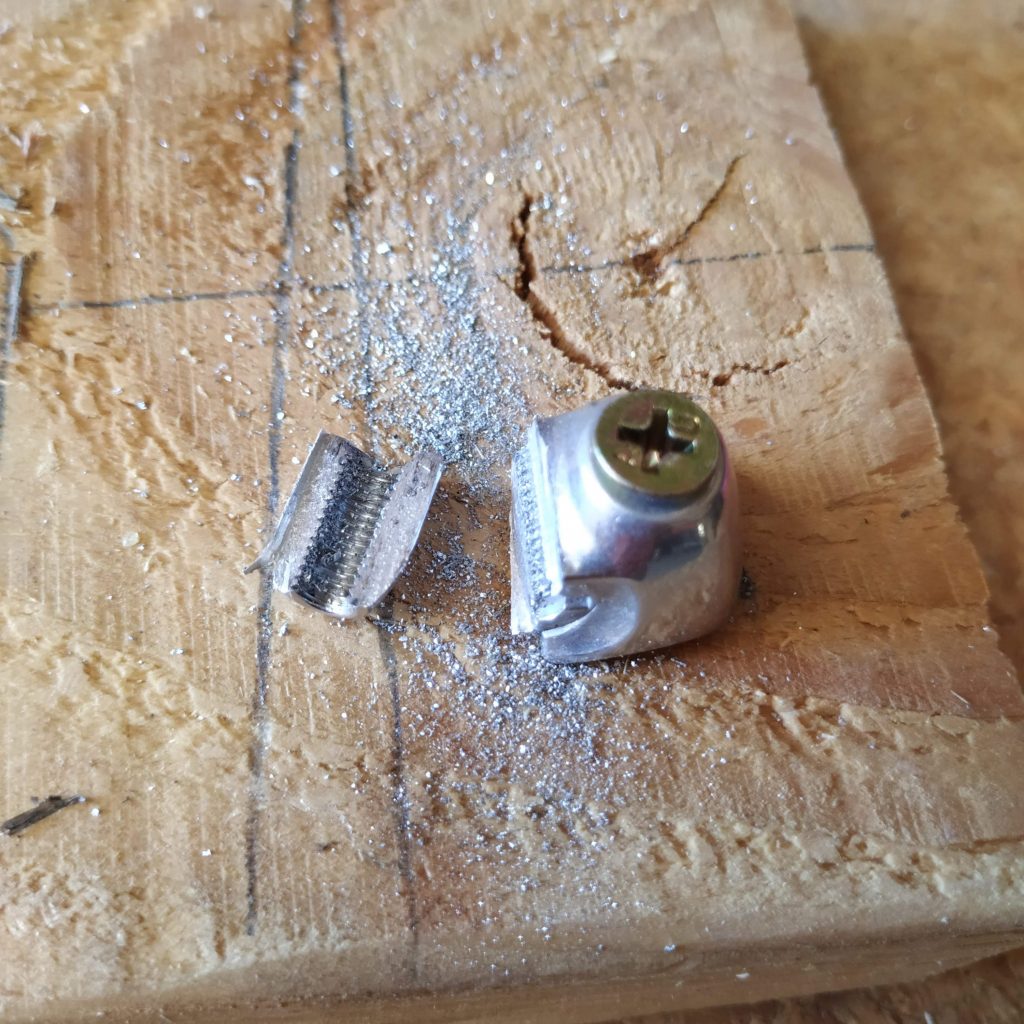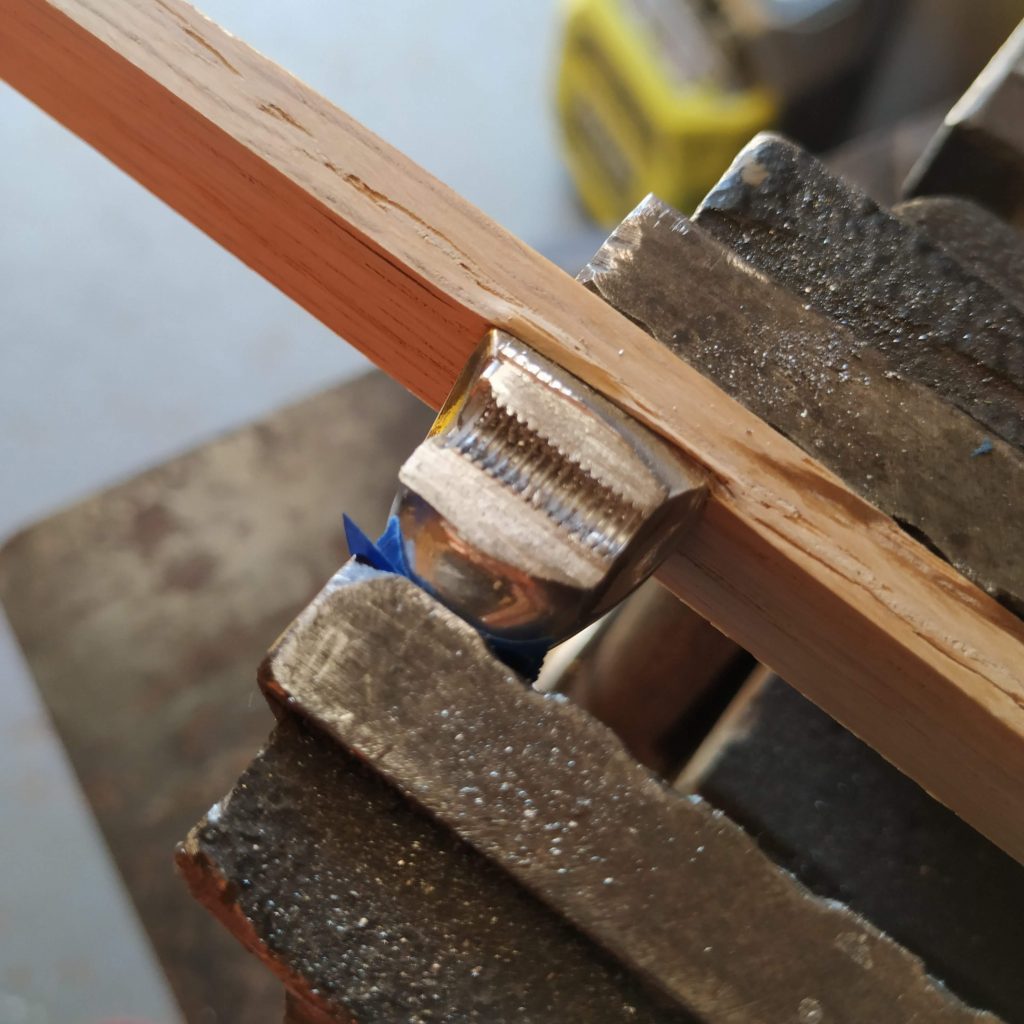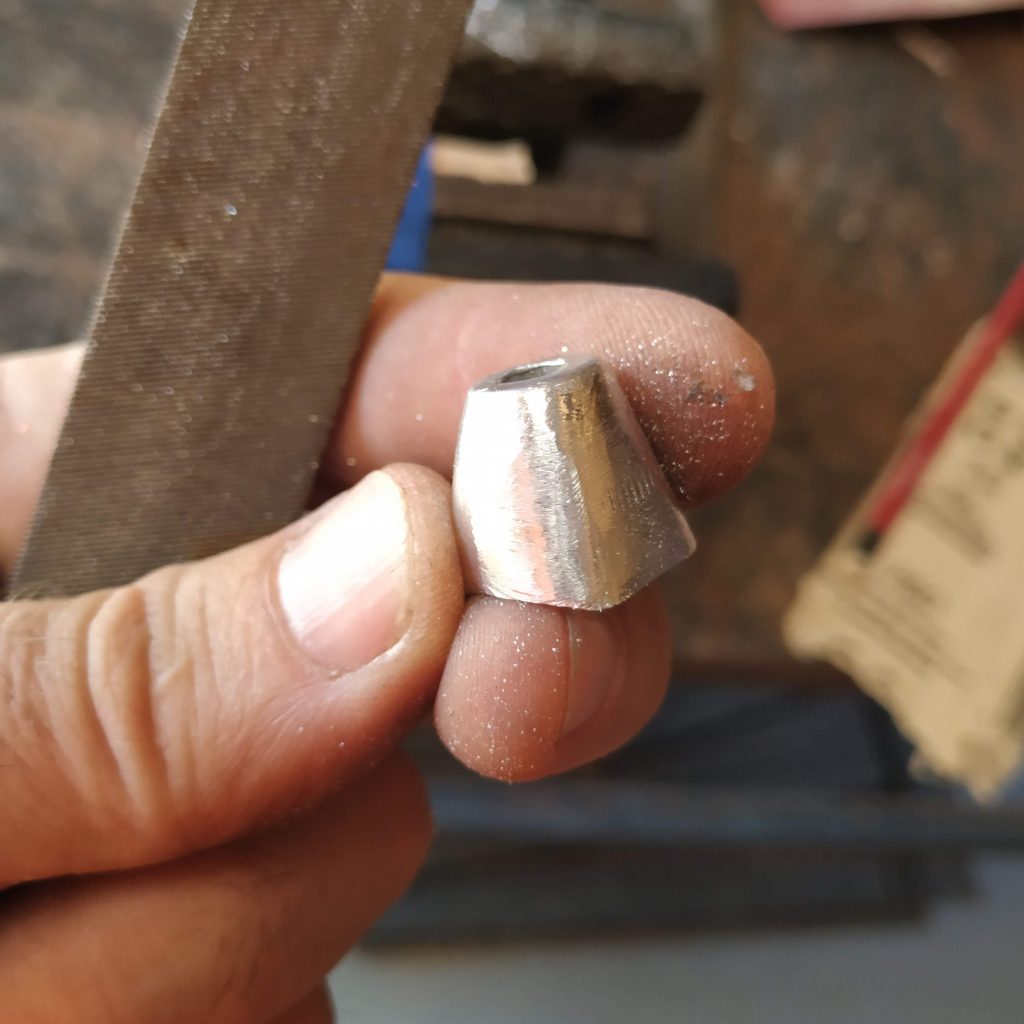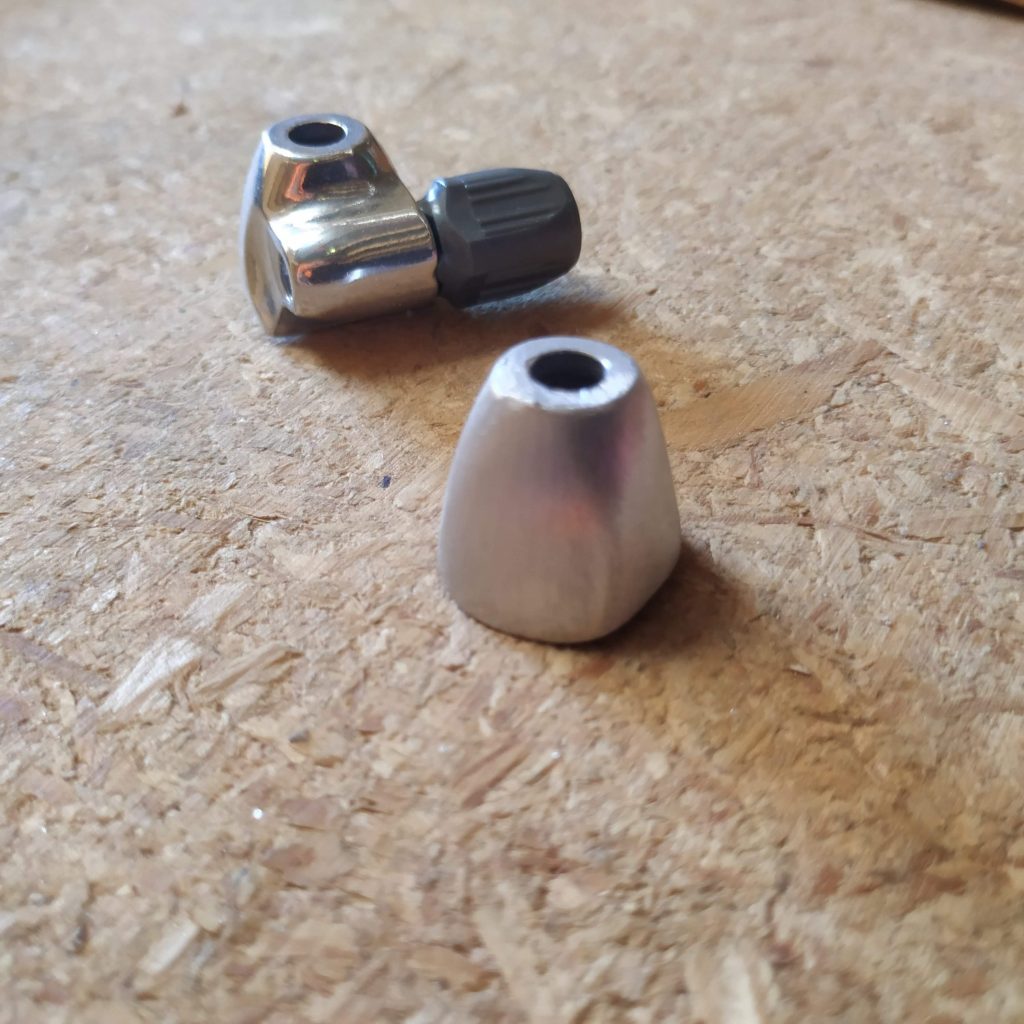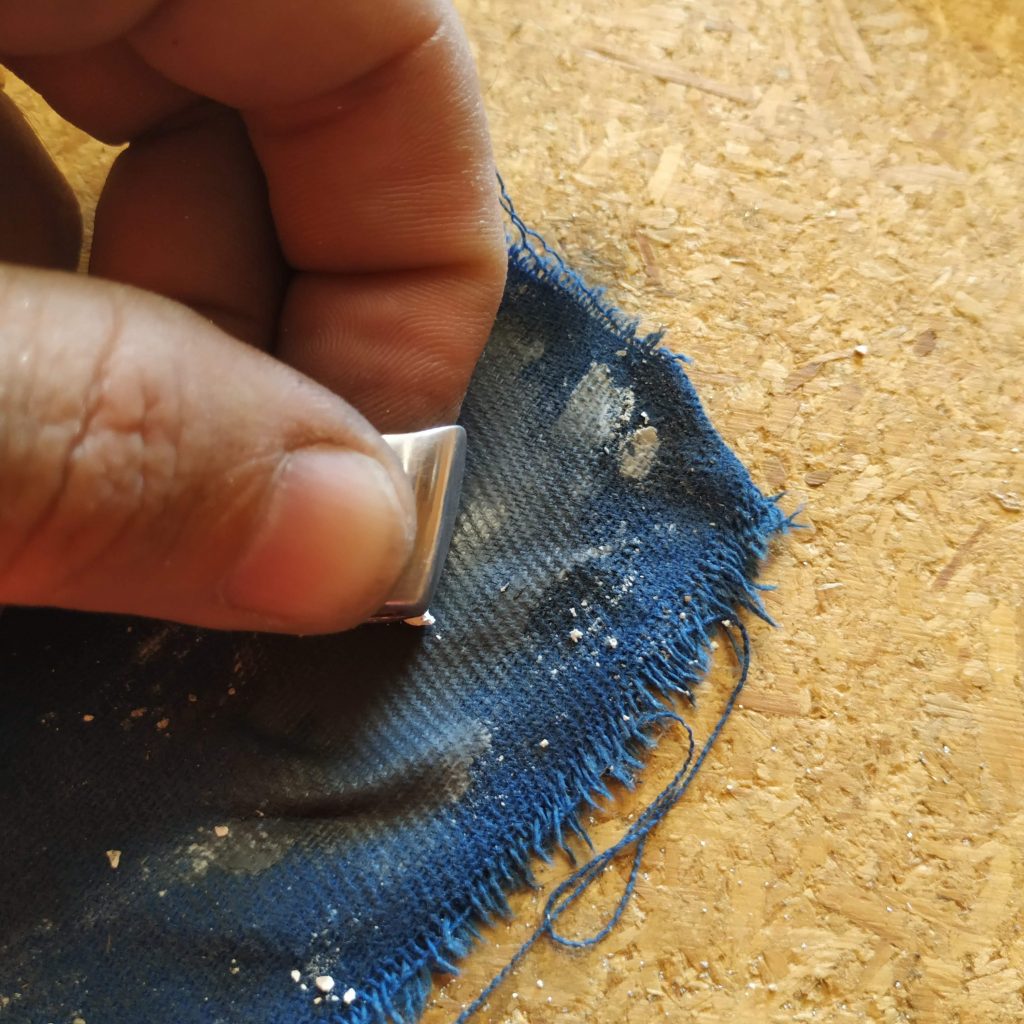Posted on August 7, 2020
Saving grams to justify grams.
In finalising the build of my new bike I had overlooked one component, the seat collar. I feel this is a part that is easy to overlook, and often one just goes with the stock collar that comes with a frameset – I mean – why not?
This is a Surly, and Surly hardware is overbuilt. The seat collar is made of stainless steel. Big deal, I hear you say.
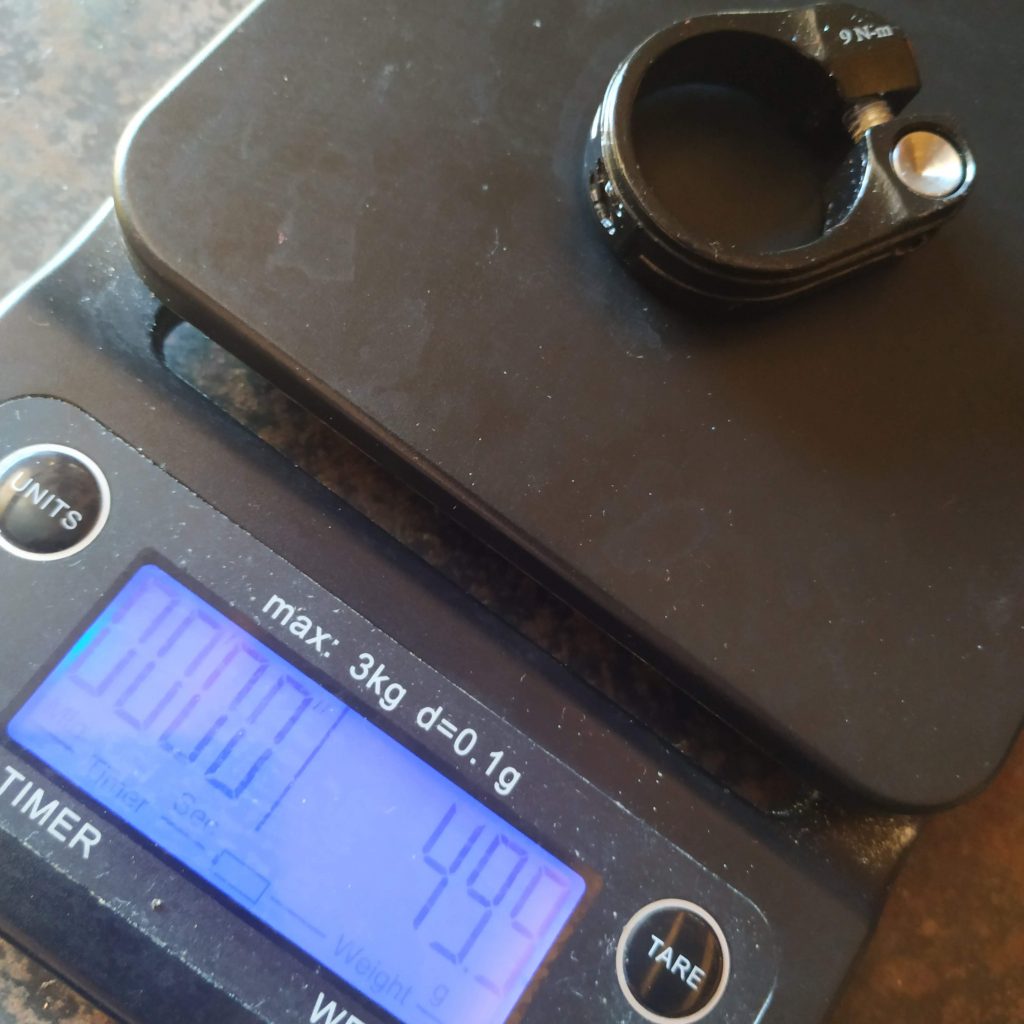
But it weighs 50g (1.8oz in American), and it is black. I have chosen a silver Hope headset, silver Velocity Blunt SS rims, silver Hope Pro4 hubs, silver DT Swiss nipples and silver DT Swiss Revolution spokes. So I ordered a silver Hope seat collar (They only had one in stock, in 30mm).
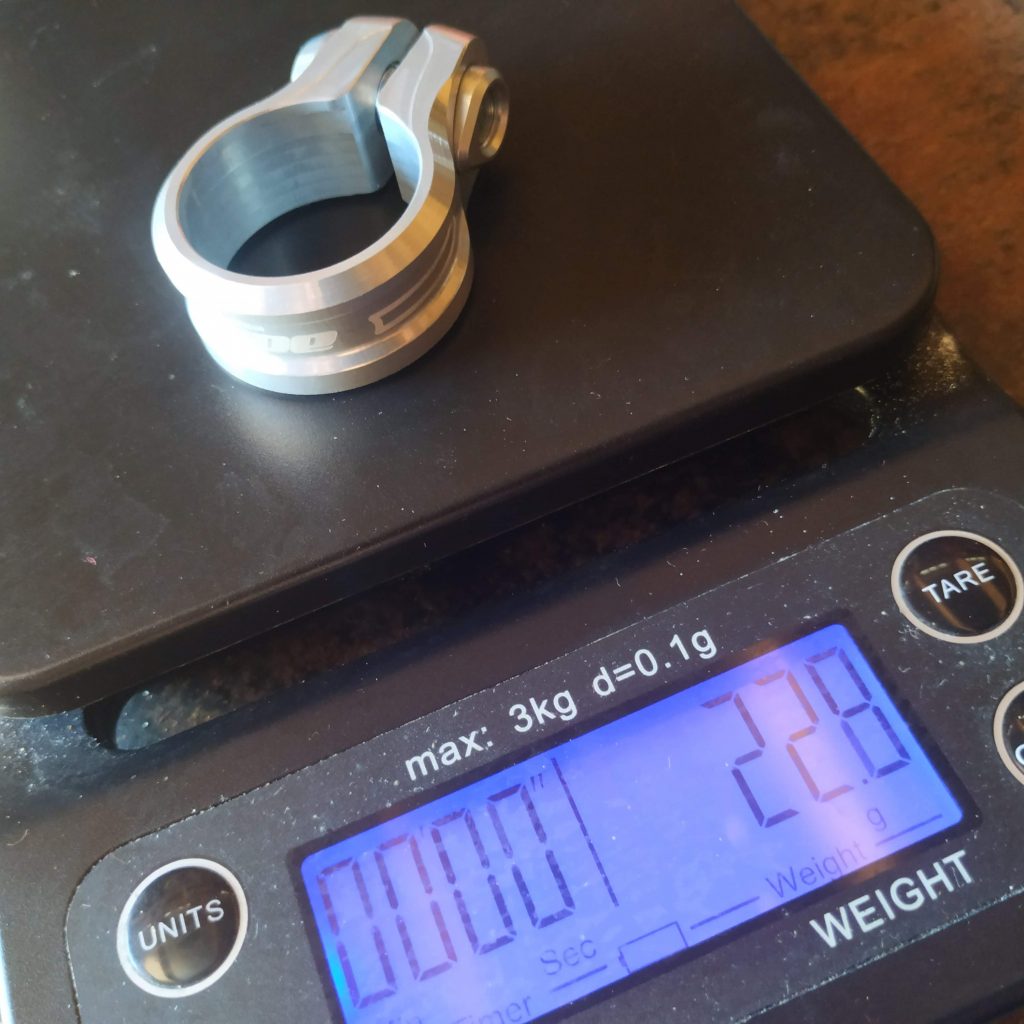
Not only does it look infinitely better in my complete build, but I saved a whopping 27g (0.95oz) which, in a weightweenie environment, is a huge amount for a single component. On a Surly however it merely helps justify necessities like the Velo Orange Mojave bottle cage, which enables me to carry that extra 1l (34oz of the other kind) of water in a Nalgene bottle, and it weighs a svelte *cough*…
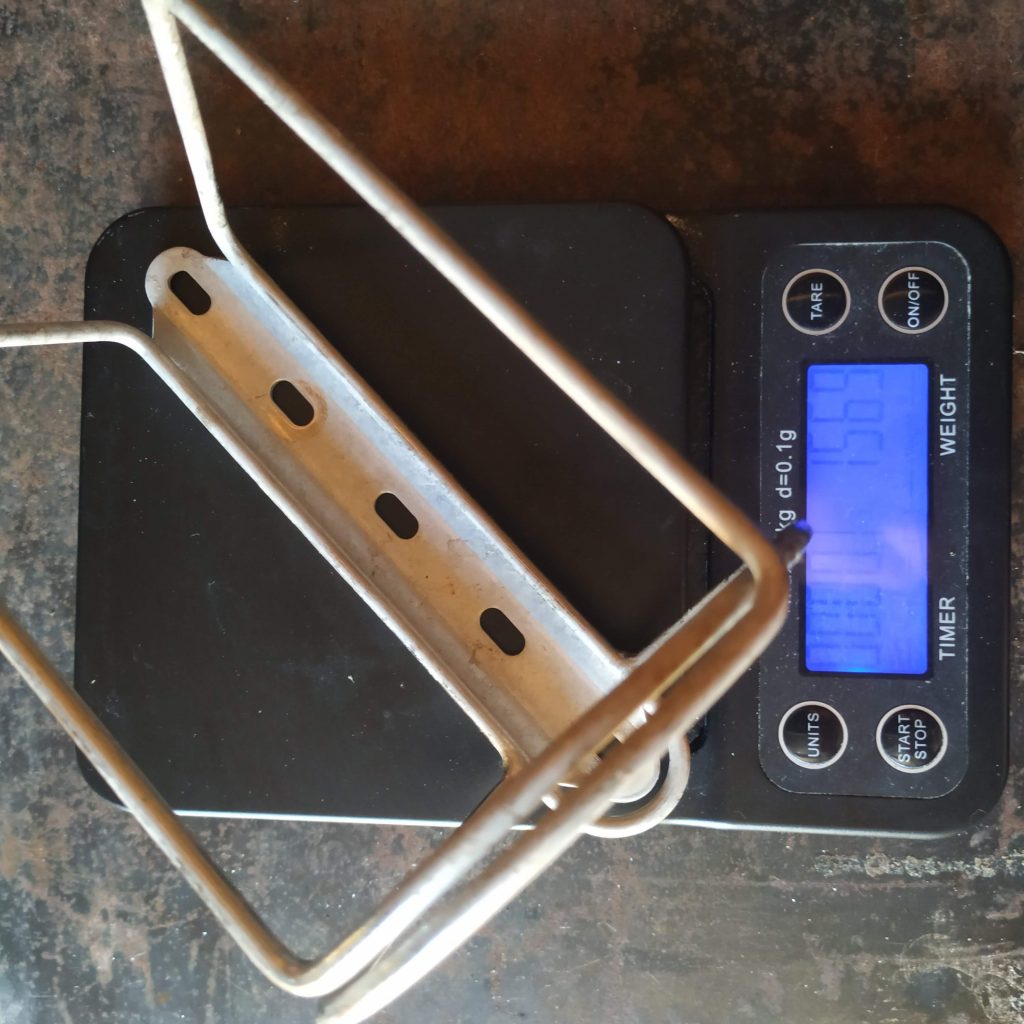
157g (5.5oz). Now that I commit this to blog, I think I should weigh each of the three Mojave I have and see if one weighs less than the other. Or maybe I should “add” some drillium.
Posted on June 28, 2020
It weighs a fart.
I will often say that something weighs a fart, or that the difference in weight between two things is a fart. This is usually seen as being humorous, and yes it is. Toilet humour is always funny. Best of all, farts do have a weight, and one which substantiates my description of something that weighs very little.
A good example of a fart between two weights is the difference between a decent stainless steel M5 bolt and a titanium M5 bolt. These should have similar structural integrity, but one weighs a fart, and there is a fart between their weights (I apologise for the fact that they are not the same length, and that one has a captive washer. Maybe that compensates for the length).
As you can see, by replacing 13 M5 bolts on my Midnight Special I will save a whopping 19.5g (0.7oz in American), and introduce the possibility for galvanic corrosion and maybe some other risks which I shall not consider.
But how much does a fart actually weigh, I hear you asking… Well, approximately 0.05g (0.001763698oz). We also expel an average of 1.3g (0.05oz) of fart per 24h (1000 beats in Swatch internet time) period, just by being real live human beings who eat things.
There is an academic paper on the subject, and several threads I cross-referenced here and here which all point towards the same averaging of about 0.04g for an average of 100ml fart volume, and around 14 farts per day but apparently averaging 500ml to 1500ml overall volume in 24h, hence my averaging to 0.05g and 1000ml volume, for simplicity of visualisation.
One final note: the titanium M5 bolt in the picture weighs 32 farts.
Posted on June 28, 2020
Downtube cable-stops…
I have officially removed front derailleurs from (not all of) my bikes, and been blissfully riding 1×10 drivetrains on my road and gravel bikes for over a year. Yes, I have stuck with 10 speed because it is what I have on (almost) all my bikes, and it keeps things simple.
Converting a light-weight ’90s Columbus steel road bike to a 1x drivetrain leaves a disused cable stop on one side of the downtube or—if you take that off—a sharp and unsightly boss. The only commercial solution I am aware of is Problem Solvers’ dummy cover which is pretty decent in theory, but it is not an exact cosmetic match to the Shimano cable stops and—most importantly—it weighs enough that I cannot justify putting it on my bike.
Today I am in the process of building my new gravel bike: a Surly Midnight Special. This is a decent but not light-weight double butted chromoly NATCH steel frame: it’s a Surly, and Surly has never known for their featherweight frames.
This is what I recommend you do (in picture form):
I used a hacksaw and two files to shape it, then moved to 240 grit sandpaper, then green Scotch-Brite followed by some polishing compound (the stuff you use to polish the surface of a car’s paint) on a scrap of denim.
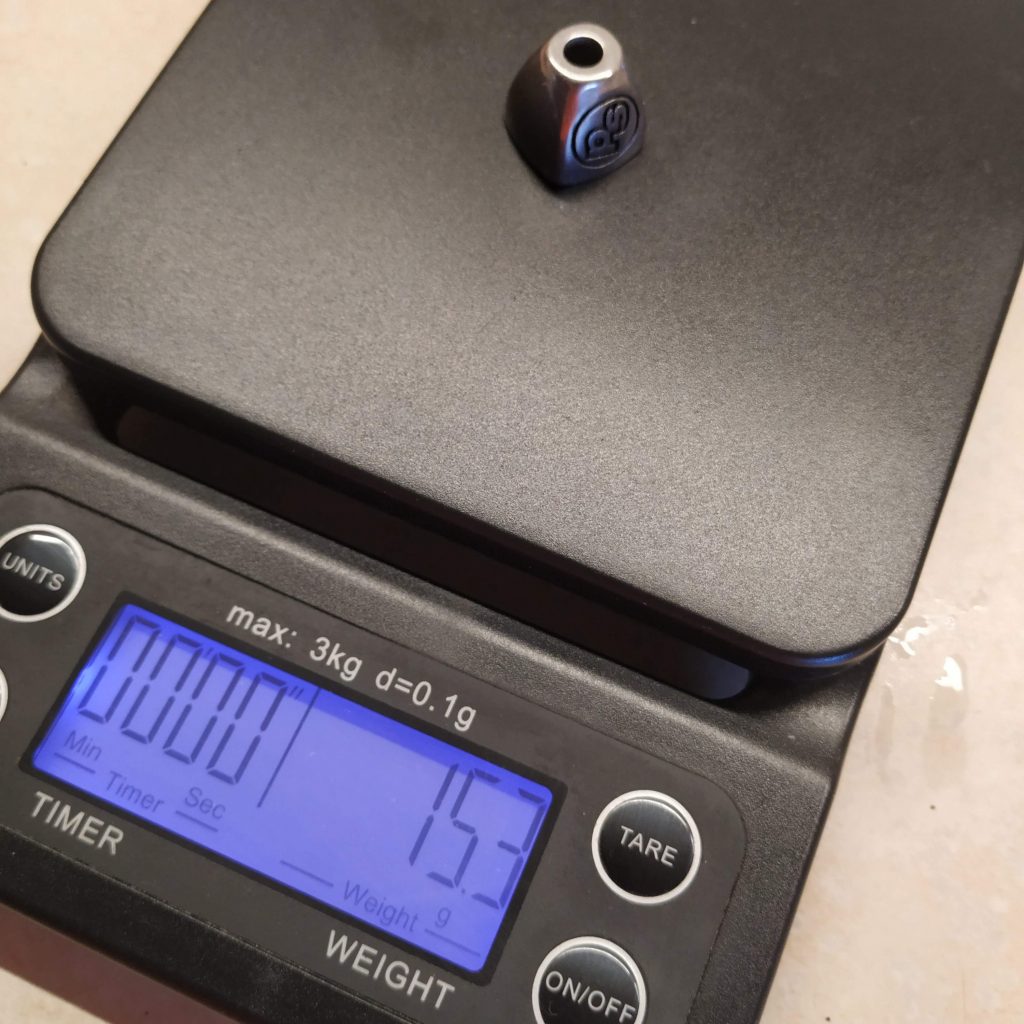
15g! 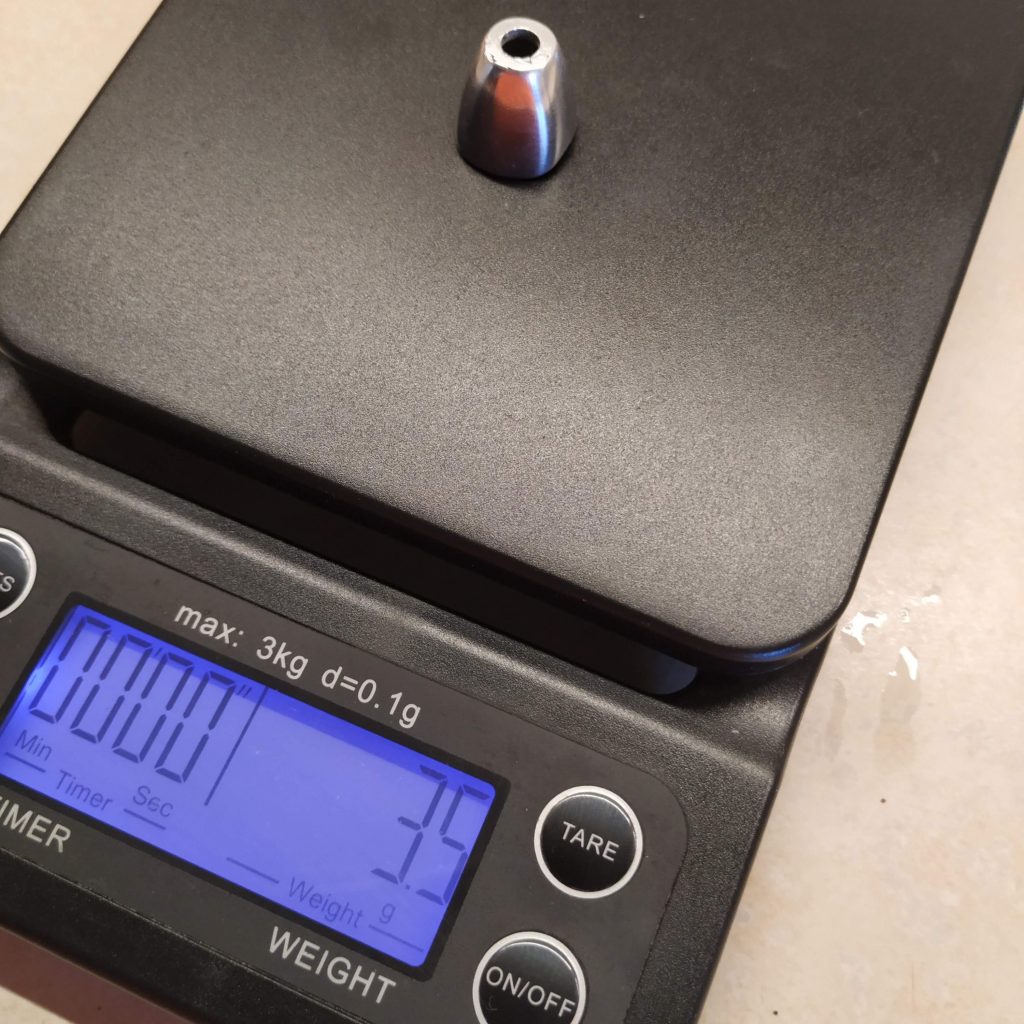
My modified stop 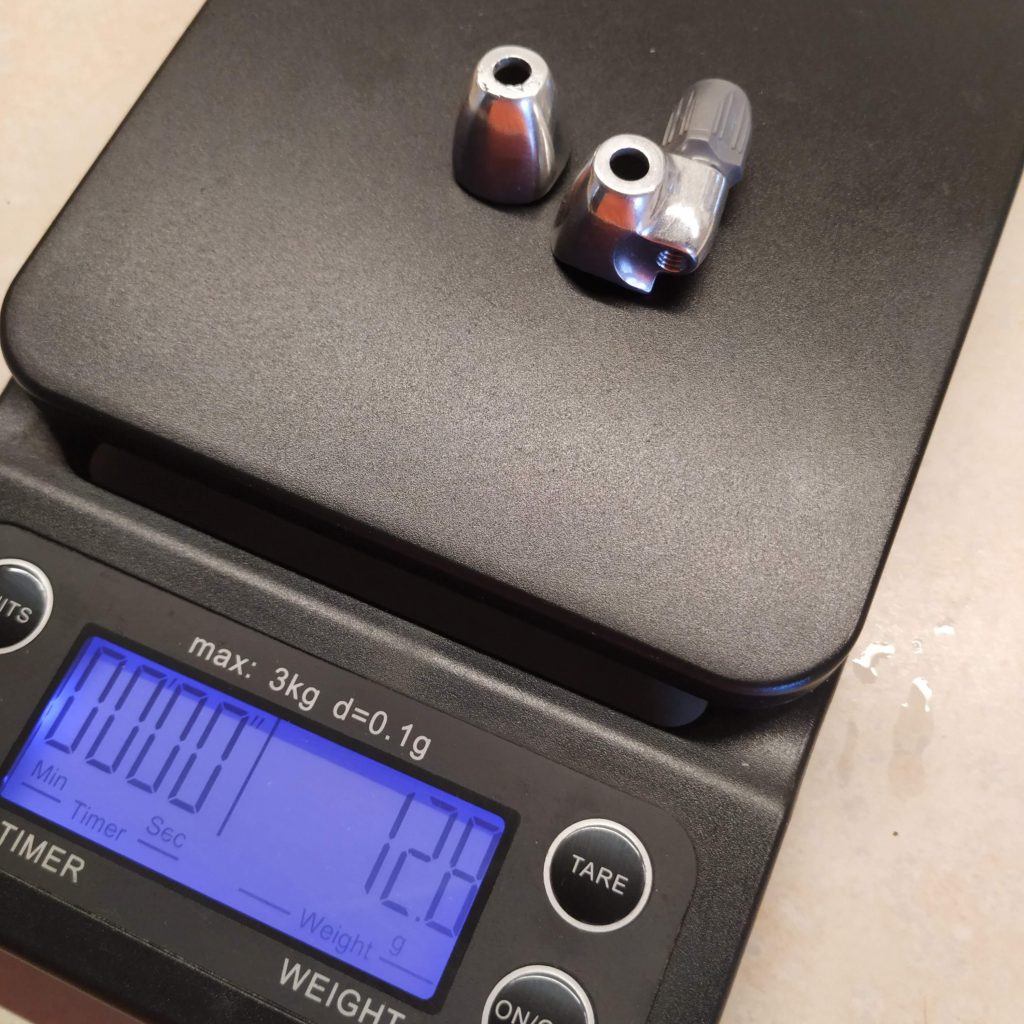
Both stops, as I shall use them.
As you can see, the Problem Solvers stop weighs a terrifying 15.3g (0.5oz in American), whereas my modified stop comes in at a pleasing 3.5g (0.1oz), and both stops together weigh less than one of the commercial solution to the problem.
You may think that this kind of Weight Weenus behaviour is completely unnecessary, but I think you will find that many of us will fight to save a few grams here and there so that we can justify carrying a flask or riding a Brooks saddle.

